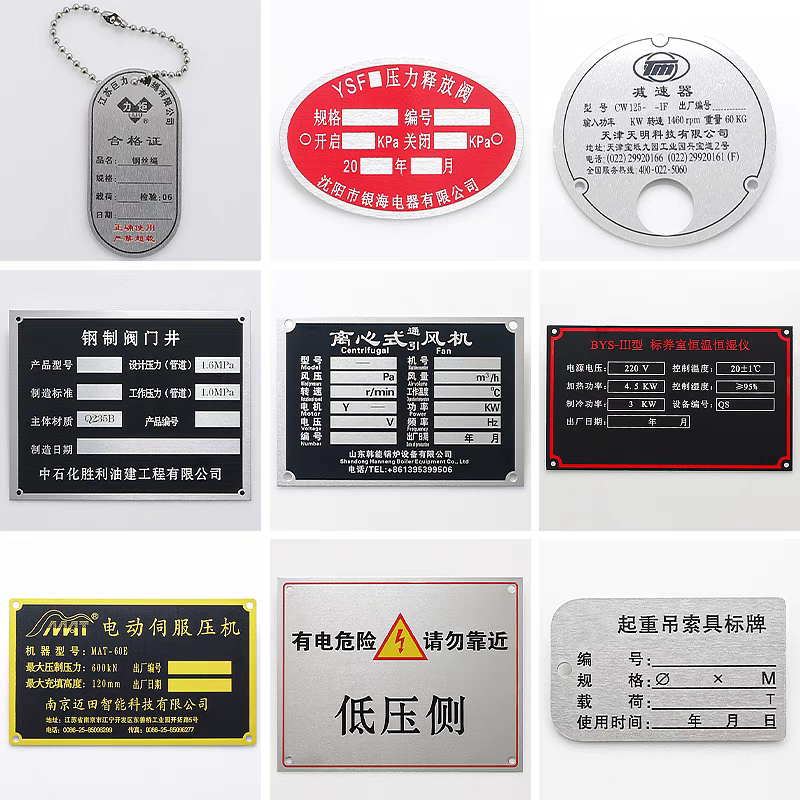State of California warning labels are ubiquitous. From parking garages to coffee shops, jewelry stores to hardware aisles, these notices have become an inescapable part of the Californian landscape and consumer experience. Driven primarily by Proposition 65 (Prop 65), these labels serve a critical public health purpose but also generate significant debate and operational challenges. Understanding their scope, impact, and rationale is crucial for businesses operating in California and consumers navigating the marketplace. Here are seven essential aspects of State of California warning labels:

1. The Engine Behind the Labels: Proposition 65 (Prop 65)
The cornerstone of the State of California warning labels phenomenon is the Safe Drinking Water and Toxic Enforcement Act of 1986, universally known as Proposition 65. Passed by voter initiative, Prop 65 aims to protect California citizens and the state's drinking water sources from chemicals known to cause cancer, birth defects, or other reproductive harm. It also seeks to empower citizens by informing them about exposures to these chemicals.
The law mandates two key requirements:
Prohibition on Discharge: Businesses cannot knowingly discharge listed chemicals into sources of drinking water.
Clear and Reasonable Warning Requirement: Businesses must provide a "clear and reasonable warning" before knowingly and intentionally exposing anyone to a listed chemical, unless the exposure poses no significant risk (for carcinogens) or is below levels causing observable effect (for reproductive toxins).
The State of California warning labels are the most visible manifestation of this second requirement. The Office of Environmental Health Hazard Assessment (OEHHA) maintains and updates the list of Prop 65 chemicals, which now exceeds 900 substances. The responsibility for determining if a warning is necessary and providing it falls squarely on businesses.
2. Decoding the Language: What Do the Warnings Actually Say?
Standardized State of California warning labels were introduced via regulatory changes in August 2018 to improve clarity and consistency. While older versions may still exist during the transition, the current mandated warnings follow specific formats:
The Signal Word: All warnings must start with the word "WARNING:" in bold, capital letters.
The Symbol: A triangular yellow warning symbol with an exclamation point is required on most warnings (with limited exceptions).
The Exposure Source: Warnings must specify at least one source of exposure relevant to the product, place, or area. Common examples include:
"This product can expose you to chemicals including [chemical name], which is known to the State of California to cause cancer." (Product-specific)
"This area contains chemicals known to the State of California to cause cancer." (Area-specific, e.g., parking garages)
"Drinking distilled spirits, beer, coolers, wine, and other alcoholic beverages may increase cancer risk..." (Alcohol-specific)
"Certain foods and beverages sold or served here can expose you to chemicals including acrylamide... in many fried or baked foods..." (Food service-specific)
The Outcome: The warning must state that the chemical(s) are "known to the State of California to cause cancer," "birth defects or other reproductive harm," or both.
The URL: All warnings must include the URL: www.P65Warnings.ca.gov. This state-run website provides more detailed information about Prop 65, listed chemicals, and the reasons for the warnings.
The goal is to provide more specific information than the older, vaguer warnings like "This product contains chemicals known to the State of California to cause cancer and birth defects or other reproductive harm."

3. Where You'll Encounter Them: Ubiquity Across Industries
State of California warning labels permeate a vast array of products and environments. Their presence is not an automatic indicator of immediate danger but rather signifies that a listed chemical is present above the "safe harbor" levels set by OEHHA. Common places and products include:
Consumer Products: Furniture, clothing, footwear, electronics, batteries, appliances, power cords, tools, toys, cosmetics, personal care products, jewelry, ceramicware, vinyl/PVC items, and countless others.
Food & Beverages: Alcoholic beverages, coffee (due to acrylamide formed during roasting), baked goods (acrylamide), potato chips (acrylamide), canned goods (BPA in linings), fish (mercury), and restaurant menus/displays.
Retail Environments: Posted at entrances to stores, parking facilities (due to vehicle exhaust chemicals), and specific aisles containing products requiring warnings.
Housing: Rental properties and real estate transactions often require warnings about potential exposures (e.g., lead paint in older buildings).
Workplaces: Required in certain occupational settings where exposures to listed chemicals occur.
Hotels: Warnings may be present regarding chemicals in pool areas, furniture, or cleaning products.
The sheer breadth means virtually any product sold in California or any physical business location could potentially require a State of California warning label if it contains a listed chemical above the threshold.
4. The Ripple Effect: Impact on Businesses and Consumers
The implementation of State of California warning labels has profound effects on multiple stakeholders:
Business Costs & Burden: Compliance requires significant effort and expense. Businesses must:
Understand Prop 65 requirements.
Determine if their products or operations involve listed chemicals above safe harbor levels (often requiring expensive laboratory testing and supply chain scrutiny).
Implement appropriate warning systems (labeling products, posting signs, updating websites, providing notices to tenants/buyers).
Maintain vigilance as the chemical list and regulations evolve.
Face potential litigation costs (see below). This burden is particularly heavy on small businesses.
Litigation Landscape: Prop 65 includes a "bounty hunter" provision allowing private citizens, advocacy groups, and law firms to sue businesses for alleged violations on behalf of the state and collect a portion of the civil penalties (up to $2,500 per violation per day) plus their attorneys' fees. This has led to a significant volume of lawsuits, sometimes criticized as "shake-downs" targeting minor infractions or technicalities for financial gain rather than significant public health improvements. Settlements are common to avoid even costlier litigation.
Consumer Perception & Behavior: The ubiquity of warnings creates a complex dynamic:
Information Overload & Desensitization: The sheer number of warnings can lead to "warning fatigue," where consumers become desensitized and potentially ignore all warnings, including critical ones.
Confusion & Anxiety: Consumers may struggle to understand the actual level of risk implied by a warning, leading to unnecessary anxiety or confusion about what is truly safe. The standardized format aims to improve this but hasn't eliminated the challenge.
Empowerment: For some consumers, the warnings provide valuable information that allows them to make more informed choices, especially if they have specific health concerns or are pregnant.
5. Navigating the Gray Areas: Controversies and Criticisms
State of California warning labels are not without significant controversy:
"Over-Warning": Critics argue the law triggers warnings for exposures far below levels scientifically proven to cause harm in humans, and for chemicals found naturally in many foods (like acrylamide in coffee or bread). This dilutes the meaning and urgency of warnings for genuinely hazardous exposures.
Litigation Abuse: The private enforcement mechanism, while intended to supplement government efforts, is frequently criticized for enabling lawsuits focused more on generating attorney's fees and settlements than on achieving meaningful public health outcomes. Businesses often settle quickly to avoid exorbitant legal costs, regardless of the merits.
Lack of Risk Context: Warnings don't specify the amount of the chemical present, the level of risk, or how the exposure compares to everyday background levels. A warning on a piece of jewelry might imply a similar risk level as a warning on a potent industrial solvent, which is rarely the case.
Consumer Confusion: As noted, the sheer volume and lack of risk differentiation lead to confusion and desensitization, potentially undermining the law's core purpose of informing the public effectively.
Economic Burden: The compliance costs and litigation risks act as a de facto tax on businesses operating in California, potentially impacting product prices and availability, and disproportionately affecting smaller entities.
Preemption Challenges: Businesses operating nationally often face difficulties complying with California's unique requirements, sometimes leading to products carrying State of California warning labels even in states without such laws, further contributing to consumer confusion nationwide.
6. Beyond the Label: Exemptions and "Safe Harbor" Levels
Not every product containing a listed chemical requires a State of California warning label. Businesses can avoid the warning requirement through exemptions:
Government Exposure: Exposures resulting from government agency actions are exempt.
Naturally Occurring Chemicals: Exposures to listed chemicals that occur naturally in food are generally exempt, unless the chemical was added or present at levels requiring a warning.
Household Water: Water provided by public utilities meeting legal standards is exempt.
"Safe Harbor" Levels: This is the most significant exemption pathway. OEHHA establishes "No Significant Risk Levels" (NSRLs) for carcinogens and "Maximum Allowable Dose Levels" (MADLs) for reproductive toxins. If a business can demonstrate that the exposure to a listed chemical falls below these scientifically determined thresholds, no warning is required. Proving this often requires rigorous testing and documentation.
Navigating these exemptions requires careful legal and scientific analysis, often necessitating expert consultation.

7. Living with Prop 65: Practical Advice for Consumers and Businesses
Understanding State of California warning labels is key to navigating them effectively:
For Consumers:
Don't Panic: A warning doesn't automatically mean the product is dangerous. It signifies the presence of a listed chemical above the state's very conservative safe harbor level.
Seek Context: Visit www.P65Warnings.ca.gov to learn more about the specific chemical(s) mentioned (if any) and the reasons for the listing.
Evaluate Risk: Consider the type of product, the potential exposure route (ingestion, inhalation, skin contact), and your personal circumstances (e.g., pregnancy). A warning on a piece of furniture you sit on occasionally poses a different potential risk profile than a chemical in a food you consume daily.
Make Informed Choices: Use the information, combined with your own research and risk tolerance, to decide whether to purchase or use a product bearing a warning. Consult your doctor if you have specific health concerns.
Understand the Ubiquity: Recognize that these warnings are incredibly common due to the law's structure, not necessarily because every product is uniquely hazardous.
For Businesses (Especially Selling in California):
Take Prop 65 Seriously: Non-compliance can lead to costly lawsuits and penalties. Ignorance is not a defense.
Know Your Supply Chain: Investigate the materials and components used in your products. Request Prop 65 compliance statements and testing data from suppliers.
Assess Your Products/Operations: Determine if any listed chemicals are present above safe harbor levels. This often requires product testing by accredited labs.
Implement Compliant Warnings: If warnings are required, use the exact format mandated by OEHHA (correct symbol, signal word, exposure source, outcome statement, URL). Ensure warnings are clear and reasonable – on product labels, signage, websites, and catalogs as applicable.
Maintain Records: Keep detailed documentation of your compliance efforts, testing results, supplier communications, and warning implementations.
Seek Expert Guidance: Consult with legal counsel specializing in Prop 65 and potentially toxicologists or compliance consultants, especially if your product portfolio is complex or you receive a "Notice of Violation."
Monitor Updates: The Prop 65 chemical list and regulations are updated frequently. Subscribe to OEHHA notifications.
State of California warning labels are a direct result of a citizen-driven initiative aimed at empowering the public and reducing exposure to harmful chemicals. They represent a unique and aggressive approach to environmental health policy. While successful in raising awareness and arguably driving some reformulations (like reducing lead in jewelry or BPA in can linings), their legacy is complex.
The ubiquity of the warnings, driven by low liability thresholds and a litigious enforcement environment, has led to significant controversy, including charges of over-warning, consumer desensitization, and undue burden on businesses. The lack of risk context within the warnings themselves remains a critical flaw in effectively communicating actual danger to the public.
Navigating the world of State of California warning labels requires understanding both their public health intent and their practical realities – the legal framework for businesses, the potential for litigation, and the need for consumers to interpret them critically. Whether viewed as a vital consumer protection tool or a well-intentioned system burdened by unintended consequences, these yellow triangles and bold "WARNING" statements are likely to remain a defining feature of the Californian marketplace for the foreseeable future. Staying informed through resources like www.P65Warnings.ca.gov is essential for all stakeholders.







